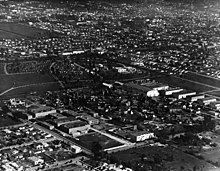 Synopsis: The Doom List - you'd rather be dead than be on it: the intriguing new 1920s mystery featuring Irish-born cop turned private investigator Tom Collins.
Synopsis: The Doom List - you'd rather be dead than be on it: the intriguing new 1920s mystery featuring Irish-born cop turned private investigator Tom Collins.July, 1922. Newly-appointed 'movie czar' William H. Hays is about to arrive in town on a single-minded mission to clean up Hollywood. He is said to be compiling a list of 'undesirables' whom he plans to bar from screen work. They call it the Doom List.
With the industry in the grip of fear and paranoia, Hollywood's hottest young director Rex Ingram is determined that no hint of scandal should mar the premiere of his new movie, The Prisoner of Zenda, and hires private investigator Tom Collins, a fellow Irishman, with instructions to protect his leading lady's reputation at all costs. But, as Collins discovers, Barbara La Marr isn't the only member of the cast hiding a dangerous secret.
Meanwhile, a body is discovered in the Baldwin Hills to the south of the city. Could there be a connection? Against his better judgement, Collins is drawn into a case of scandal, forbidden love, blackmail . . . and cold-blooded murder.
This quite neatly follows on from "The Long Silence" which is set in February 1922 and has Tom investigating the disappearance of an actress with close links to the recently murdered director, William Desmond Taylor.
 |
| Hollywood 1922 |
 |
| Rex Ingram |
 |
| Barbara La Marr |
 |
| Ramon Novarro |
 |
| Will H Hays |
I really enjoyed this second trip into old Hollywood - silents films are still the rage, talkies are barely on the scene, actors and actresses were glamourous, scandalous, mysterious and sometimes murderous. The weaving of some of these famous Hollywood folk into the story gives it a bit more of an edge, and O'Donovan again uses events from this time as a backdrop.
Whilst it is not necessary to have read the first in this series, I would recommend that you do as there are references to previous events in this new outing - events which have never quite been closed.
Whilst it is not necessary to have read the first in this series, I would recommend that you do as there are references to previous events in this new outing - events which have never quite been closed.
 In Tom Collins, ex-cop, ex-studio fixer, now private inquiry agent, O'Donovan gives us a character straight from the pages of the classic noir playbook - right up their with Spade, Hammer or Marlowe. I enjoyed the style of storytelling, which provided enough plot twists and turns and diversions to keep the reader firmly planted on the edge of their seat. You get a true sense of what it was like back in the early days of Hollywood and Los Angeles.
In Tom Collins, ex-cop, ex-studio fixer, now private inquiry agent, O'Donovan gives us a character straight from the pages of the classic noir playbook - right up their with Spade, Hammer or Marlowe. I enjoyed the style of storytelling, which provided enough plot twists and turns and diversions to keep the reader firmly planted on the edge of their seat. You get a true sense of what it was like back in the early days of Hollywood and Los Angeles.Check out
- Silent Era: The Silent Film Website
- Wikipedia: real life Hollywood Fixer, Eddie Mannix
- Atlas Obscura: the Fixers who buried Old Hollywood's biggest scandals

No comments:
Post a Comment